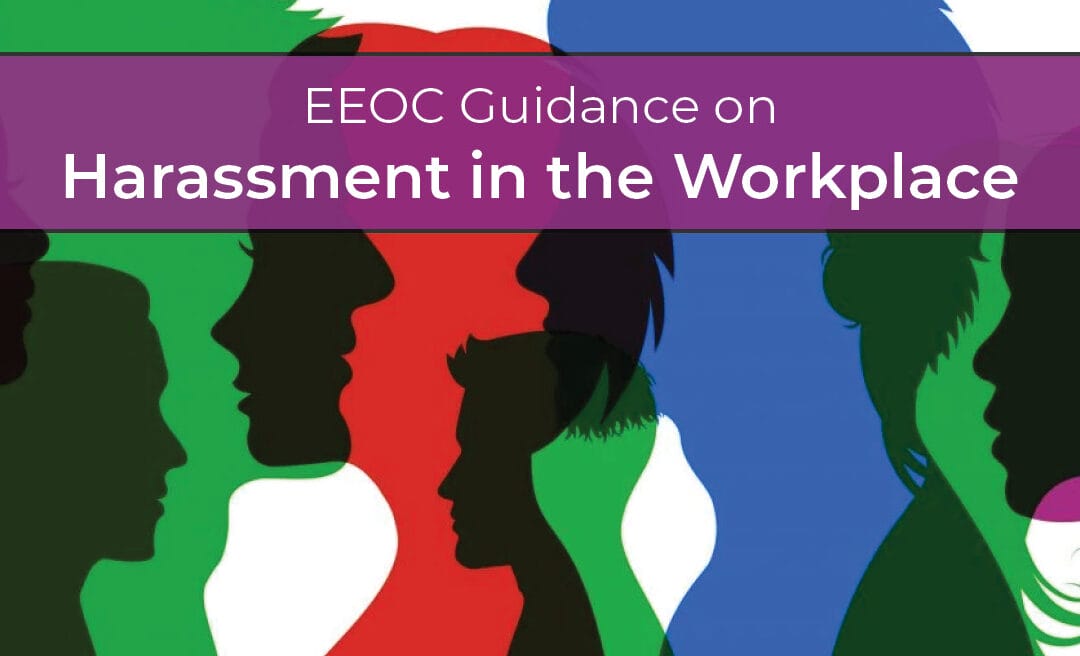On April 29, 2024, the Equal Employment Opportunity Commission published its final Enforcement Guidance on Harassment in the Workplace. The guidance, which is effective immediately, was posted for public comment in October 2023, and the agency received over 37,000 comments. While enforcement guidance is not legally binding, the Commission has provided this resource to provide clarity to the public regarding existing requirements under the law or agency policies that can provide helpful insights for employers and employees about how the EEOC will enforce the laws under its purview in the years ahead.
This latest guidance replaces and consolidates five guidance documents published throughout the 1980s and 90s, and provides a meaningful refresh, acknowledging the 21st century world. It contains seventy-six examples intended to cover a broad range of scenarios, including new examples intended to highlight how harassment can affect various vulnerable populations and underserved communities, including teen workers and survivors of gender-based violence. The EEOC’s strategic plan for 2024-28 includes discrimination against underserved populations and communities as a subject-matter priority.
The guidance also incorporates recent legal updates such as the U.S. Supreme Court’s Bostock decision which held that discrimination based on gender identity and sexual orientation is discrimination because of sex under Title VII of the Civil Rights Act of 1964.
Employers can look to this document for guidance not just on how the EEOC would enforce non-discrimination laws and regulations, but also for assistance in implementing and enforcing their own non-discrimination policies. Colleges, universities, and schools subject to Title IX may notice similarities between this guidance and the new Title IX regulations, including:
- Both use the phrase sex-based harassment in addition to the phrase sexual harassment. Sex-based harassment may be more easily understood as including conduct that is not sexual in nature but is still on the basis of sex.
- Both discuss the Bostock decision, and in doing so, clarify that discrimination on the basis of sex under both laws includes discrimination on the basis of sexual orientation and gender identity.
- Both address conduct outside the workplace (Title VII) and program or activity (Title IX), including online conduct, and when or whether such conduct can lead to a hostile environment that is in scope to address.
The new guidance can be found here. A Summary of Key Provisions can be found here. Questions and Answers for Employees are posted here, and a Small Business Fact Sheet can be found here.

